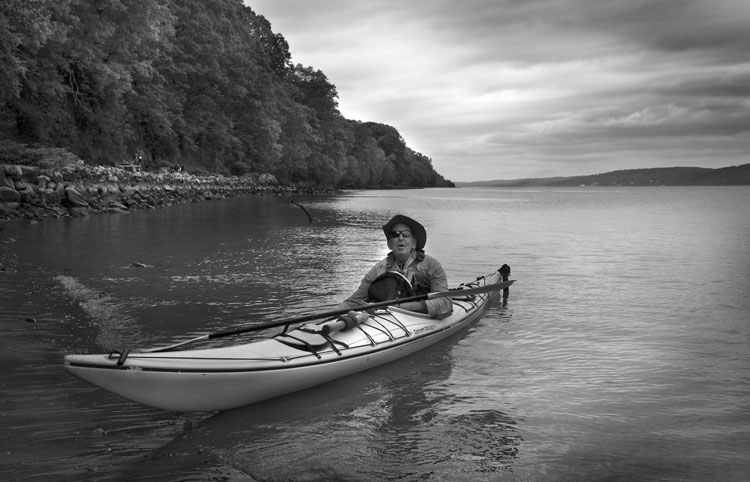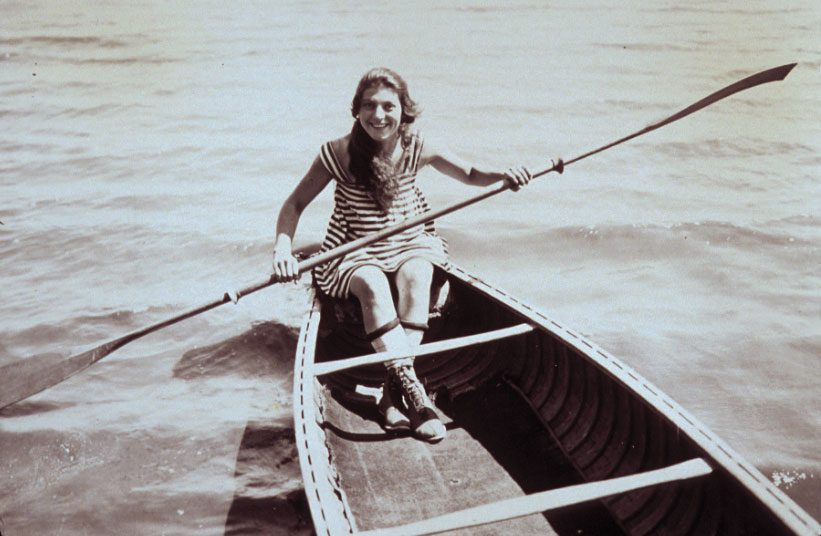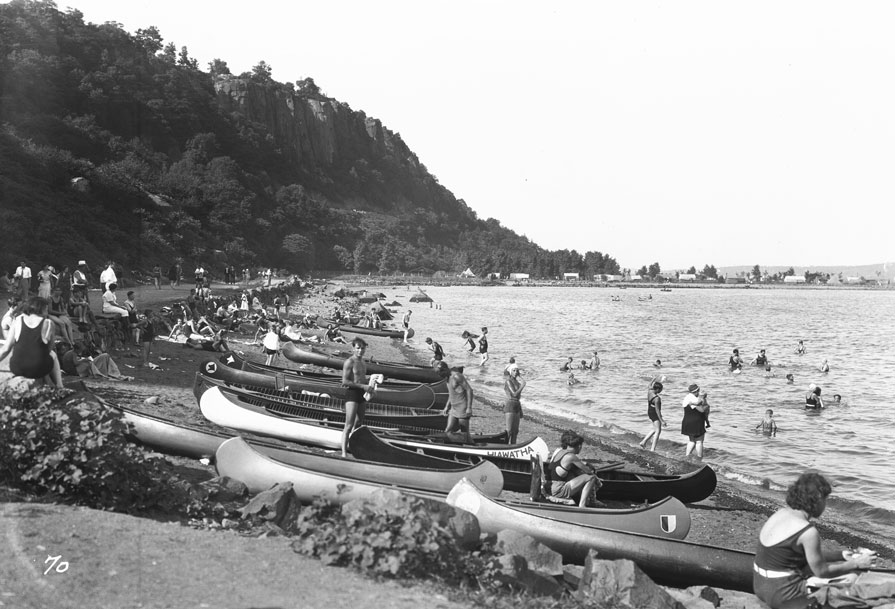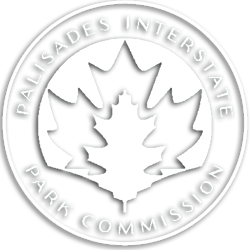Paddling Over
A “Cliff Notes” Story
July 2018
Gerry Blackstone wanted you to get out on the water. It didn’t matter if you were old or young (but especially if you were young), a schoolkid or a politician (and he seemed to know all of those, at least in Yonkers) or a senior citizen. He wanted you to take a paddle with him on the Hudson. It was his thing. His mission. And he was fearless: Gerry, with all his tote bags, and his tie-dyes, and that safari hat he wore on the water.
There was one time he called to say they were having an evening talk about brick-making in the Hudson Valley. It was at the Beczak Center, over on his side of the river, but he thought it was something I’d be interested in. I told him it’s a long drive for me to get there, but he said don’t worry — we’ll come pick you up. So that afternoon as I closed up the Kearney House, he got a few of his friends from the Yonkers Paddling and Rowing Club together and they towed a kayak over for me to paddle back across with them, through some late-day chop and some wind, to learn about brick-making. It came up in the Q-&-A after the talk that one of Gerry’s uncles once ran a brick plant on the Hudson — till it went bust because he was cutting corners and getting himself sued. The uncle was one of the Schwarzstein brothers — the same guys who ran the fabled Yonkers Ferry till it closed in 1957. Gerry thought it was a scream, his uncle trying to make a quick buck selling cheap bricks after he got out of the ferry business.
It was dark when we paddled back over, and we put glow sticks on our boats. It’s crazy how big the Hudson gets at night, how dark the Palisades loom — how quiet and fast one of those big ships can close the miles upriver from where you first see it all the way down by the G.W. After Gerry and his friends left me at Alpine, I watched them tow my empty boat back over all that dark moving water until they disappeared on it. And the point of this story is this: This was a pretty typical adventure of the Gerry Blackstone kind. Which is why so many of us felt so sad when we heard he left us in June, just seventy-nine years young.

Paddling over to the park has a long — if mostly forgotten — history behind it. In 1912, just three years after they formally opened the Palisades to the public, the Commissioners of the Palisades Interstate Park estimated that, of between three and four hundred thousand visitors who came here, “a large portion of these — perhaps one-half — reached the Park in launches, canoes and row-boats...” The Commissioners had already set aside an area north of Englewood Landing for the exclusive use of canoeists, and more than sixty season camping permits were issued for “Canoe Beach” each year until 1920. Then it was decided the area was getting too crowded with day-tripping canoeists to continue to let campers there, too, and from June 15 to September 15 each year, canoe camping was restricted to farther north in the park, by Lambier’s Landing in Tenafly. Restrictions had to be placed on canoes in the main bathing areas, too. In a 1927 letter to the Wanda Canoe Club in Edgewater, the Commissioners explained, “Of course you understand our rule against having canoes on the bathing beaches where they would be in the way of bathers, and on the paths where they would be in the way of pedestrians. In all other respects [however,] you and your members are at perfect liberty to pull out your canoes over night.…”
The pilots of the Yonkers Ferry, meanwhile, would complain to their bosses (Gerry Blackstone’s uncles!) about canoeists trying to hang on to the ferries to get a free tow across the river — the pilots were pretty sure someone was going to end up drowned. If you’re a paddler, some of this can really get your imagination going. In newspapers and magazines of the time, for example, you find stories of canoeists who paddled out onto the river with their camping gear and asked permission to pull on board a working barge; sometimes they were able to hitch a ride all the way through the locks of the Erie Canal…
Where did all these paddlers come from? And what became of them? Some of this is anecdotal, but back in the day there were more than a few canoe clubs, with boat houses where members stored their canoes, up and down the river. The years went by, and some of the boat houses burned down. Many more were wiped out by the “Great Appalachian Storm” that hit on Thanksgiving weekend in 1950. By then, however, canoeing was already waning in popularity; the river was getting dirtier; the will to rebuild just wasn’t there. Still, a few clubs went on, some long enough to see the river start to get cleaned up again: the Wanda Canoe Club here in Jersey, the Inwood Canoe Club in Manhattan — the YPRC in Yonkers.


Gerry taught chemistry and psychology for forty-five years at Eastchester High School. Some of the most moving messages at an online memorial for him are from former students — some of whom graduated half a century ago. Half a century was also how long he was with his partner, Michael Skaar, until he lost him in 2012. After his “retirement,” Gerry, the former chemistry teacher, helped monitor water quality on the Hudson, and he advocated for Yonkers’ youth and parks. He got involved with the YPRC in 2003, and he helped them launch their annual Manhattan Circumnavigation, now in its fifteenth year and with participants from all over the world. He spent his winters in Florida, where he got involved in the local paddling scene there, too.
When the weather warmed up, though, he’d be right back up here, getting people out on the Hudson. Sometimes he brought paddlers from Yonkers over to come on hikes I was leading. The other hikers would seem surprised to see a bunch of kayakers pull their spindly boats up the beach to join us. It just never occurred to them that you could paddle over to the park. That it might be practical to do that.

I always wondered if part of what drove Gerry was the legacy of those uncles of his, the Schwarzstein brothers, with their quirky ferry. (One time he told me how, when he was born in 1938, he was a Schwarzstein, too, but his parents “Americanized” it to Blackstone. With all the prejudices of the day, all what was going on in the world at the time, they felt he’d do better with a less “Jewish-sounding” name.) But I think what drove him had more to do with love — love of people and the wild earth, love of sharing the kinds of adventures that just aren’t commonplace enough any more. And I feel like for a while at least, looking from this side, the river’s going to seem a little less bright than it did.
It might be a good time to go for a paddle.
– Eric Nelsen –

